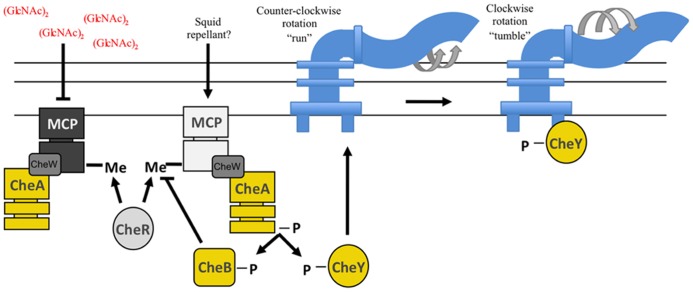FIGURE 4.
Predicted chemotaxis pathway in V. fischeri. Methyl-accepting chemotaxis proteins (MCPs) recognize specific molecules found in the environment. A MCP is often physically linked to the sensor kinase, CheA, through the CheW protein. Ligand recognition by the MCP leads to a change in the activity of CheA. Binding of an attractant, such as (GlcNAc)2, inhibits CheA kinase activity resulting in a “run.” Conversely, interaction with a repellant promotes CheA autophosphorylation wherein the phosphoryl groups are donated to both CheB and CheY. Phospho-CheY binds to the base of the flagellar motor and causes the flagellum to switch from a counter-clockwise to clockwise rotation. This causes tumbling. The methylesterase, CheB, and the methyltransferase, CheR, both control the methylation state of the MCP allowing a cell to adapt to varying concentrations of chemicals within a chemogradient. Regulators indicated in yellow have been demonstrated to be important for squid colonization (Hussa et al., 2007; Deloney-Marino and Visick, 2012; Mandel et al., 2012).

